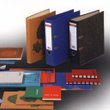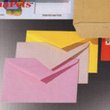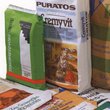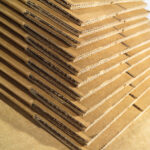The possibilities of paper and cardboard as raw materials are endless. Producing folding cardboard, corrugated cardboard, cardboard packaging of all kinds of cartonnage and displays, large, medium and small capacity bags, flexible packaging, tubes, tubes for the food industry, school and office supplies, envelopes, labels, self-adhesive materials, playing cards, wall coverings, cigarette paper, paper products for hospitals, decorative paper for the furniture industry, napkins, tablecloths and sets and companies that cut them to size, etc.
Because of these many possibilities, paper and cardboard processing is a very heterogeneous sector. It consists of at least seven subsectors:
Corrugated cardboard
Corrugated cardboard is the most widely used material for transport packaging in Europe. It is not only exceptionally durable, sturdy, practical, convenient to transport and hygienic. With corrugated cardboard you can package and present your products attractively. Products presented in corrugated cardboard packaging sell up to 14% more than products in plastic crates.

THE CORRUGATED BENELUX ASSOCIATION
Corrugated cardboard is still the most widely used material for food and non-food products. No less than 70% of all fresh products, for example, are packed in corrugated cardboard. The importance of the corrugated cardboard industry in Belgium, the Netherlands and Luxembourg is also increasing every day. To safeguard the quality and support of this growing sector within the Benelux, the Belgian and Dutch Corrugated Cardboard industry have joined forces since January 2016. Now they together form the umbrella membership organisation Corrugated Benelux Association. As a purely member organization, CBA is in no way involved in sales and production services
Companies with one specific activity

Flexible packaging

Folding cardboard
Folding cardboard is the basic material for the production of folding cartons (packaging made of folding cardboard). Folding cardboard is a sheet-shaped material, made on the basis of wood fibres and composed of one or more layers.

Unique companies

Envelopes

Bags

No migration anymore
It is part of the general knowledge that paper and cardboard are renewable materials : they are circular materials and have been for decades. Thirty years of innovation has resulted in more than half of the raw materials needed to make paper and cardboard coming from waste paper today.
Unfortunately, this recycled material cannot be used for all applications. Strength, printability, material quantity and chemical migration … are parameters that influence the choice of recycled material.
Stop all migration.
It is a logical and valued attitude for those who want to package food and use recycled materials.
In the first instance, we need to look at what can migrate. Too large molecules will not migrate because their size prevents them. Molecules that
nor can they migrate. A clear picture of the desired packaging, of the intended printed matter and of the possible barrier with the aim of: Avoid what can migrate.
When assessing the potential migration risk, it is extremely important to look at the overall picture : the packaged good and the packaging. It is necessary to assess which substances and food can migrate. One food is more sensitive to certain substances and than the other. Some are dusty and are not absorbed by packaging food.
Avoid what can migrate to the food.
A number of other parameters are also of great importance in assessing potential migration risk: how long will the food in the packaging
the so-called shelf life. At what temperature is filled, it is stored and afterwards the consumer still needs heating
in the preparation. These elements can affect migration. For example, lower temperatures will slow or halt migration. A clear description of the normal circumstances is of great importance when a choice is made for a particular packaging.
Avoids what can migrate to the diet under the given conditions for the requested application.
One can go even further in the reasoning: not all dust and migration are a risk. A danger is only a risk if someone is exposed to it. Non-hazardous substances can cause harmless migration at most. Here, too, information (target group, eating habits of the target group,…) is paramount to properly assess potential risks.
Communication is the key word! Correct communication throughout the value chain leads to the achievement of the final goal:
manage the risks associated with what can migrate to the diet under normal conditions for the requested application.
PaperPackSkills is the joint managed sector fund of the paper and cardboard processing industry and has the main task of informing, advising and consulting all companies in the paper and cardboard sector on training, training, education, workable work and proportional labour participation.



